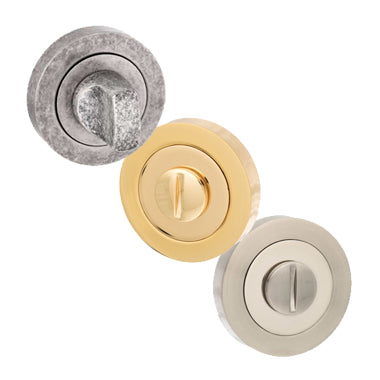

Loose hinges can cause doors to sag, stick, or not close properly. Fortunately, fixing loose hinges is a straightforward task that you can do yourself with some basic tools. Here’s a step-by-step guide to help you secure those loose hinges.
Tools and Materials You Will Need
- Screwdriver
- Screws
- Drill (optional)
- Toothpicks or wooden matchsticks
- Wood glue
- Hammer
- Chisel (if needed)
- Sandpaper
- Wood filler (optional)
Steps to Fix Loose Hinges
Step 1: Tighten the Screws
- Check the Screws: Use a screwdriver to tighten all the screws on the hinges. Sometimes, simply tightening them can solve the problem.
- Replace Stripped Screws: If any screws are stripped and won’t tighten, replace them with slightly longer or thicker screws to ensure a snug fit.
Step 2: Fill the Screw Holes
- Remove the Loose Screws: Take out the screws that are not holding well.
- Fill the Holes: Insert toothpicks or wooden matchsticks coated with wood glue into the screw holes. Break them off flush with the hinge.
- Reinsert the Screws: After the glue dries, reinsert the screws. The toothpicks provide a tighter fit for the screws.
Step 3: Drill New Pilot Holes (If Necessary)
- Mark New Holes: If the existing screw holes are too damaged, you may need to drill new pilot holes.
- Drill Holes: Use a drill bit that matches the size of your screws. Drill new holes in the door or frame where the hinge will attach.
Step 4: Secure the Hinges
- Reattach the Hinges: Align the hinge with the new or filled screw holes and insert the screws. Tighten them securely.
- Check Alignment: Ensure the door is properly aligned and opens and closes smoothly.
Step 5: Reinforce the Hinges (If Needed)
- Use Longer Screws: For added strength, use longer screws that reach into the door frame's solid wood.
- Add Extra Screws: If space allows, add extra screws to the hinge for additional support.
Optional: Fixing Deeply Stripped Holes
- Remove the Hinge: Take the hinge off the door or frame.
- Chisel Out the Area: Use a chisel to remove the damaged wood around the hole.
- Insert Wood Filler: Fill the area with wood filler and let it dry completely.
- Sand Smooth: Sand the area smooth, then reattach the hinge and insert the screws.
Tips for Preventing Loose Hinges
- Regular Maintenance: Periodically check and tighten hinge screws to prevent them from becoming loose.
- Use Quality Hardware: Invest in high-quality hinges and screws to ensure they hold up over time.
- Proper Door Use: Avoid slamming doors or hanging heavy items on them, which can strain the hinges.
Summary Table of Steps
| Step | Action |
|---|---|
| Tighten Screws | Use screwdriver to tighten existing screws |
| Replace Stripped Screws | Use longer or thicker screws |
| Fill Screw Holes | Use toothpicks and wood glue |
| Drill New Pilot Holes | Drill new holes if necessary |
| Reattach Hinges | Align hinge, insert and tighten screws |
| Reinforce Hinges | Use longer screws or add extra screws |
| Fix Deep Stripped Holes | Chisel out area, fill with wood filler, sand |
Conclusion
Fixing loose hinges is a simple DIY task that can greatly improve the function and longevity of your doors. By following these steps and tips, you can ensure your doors stay secure and operate smoothly.































































































































